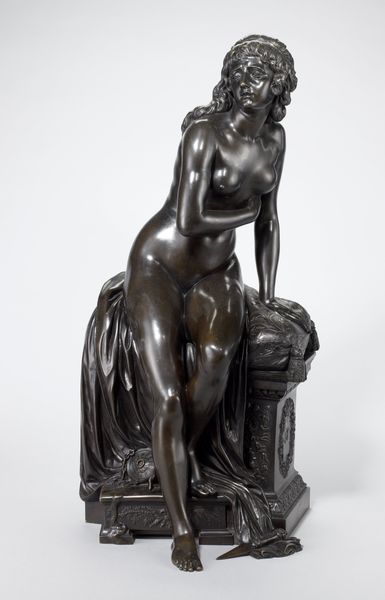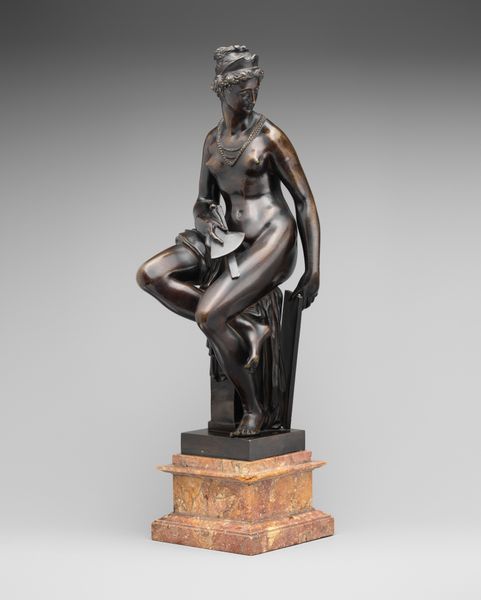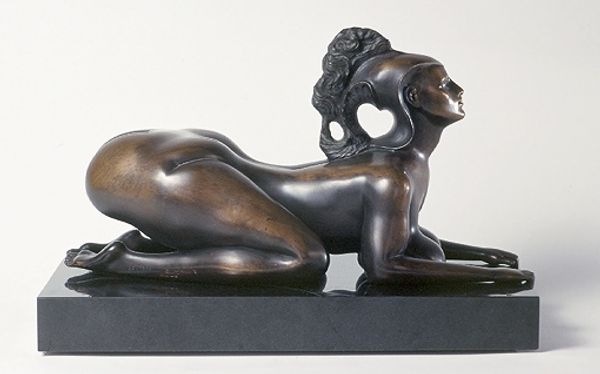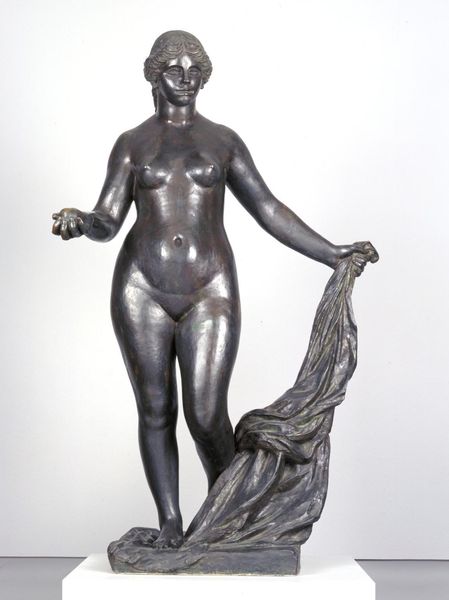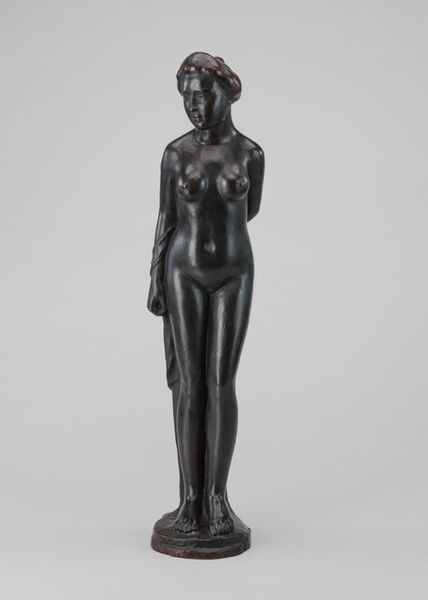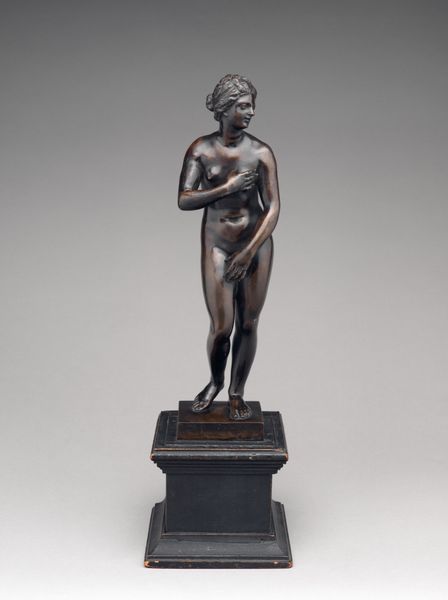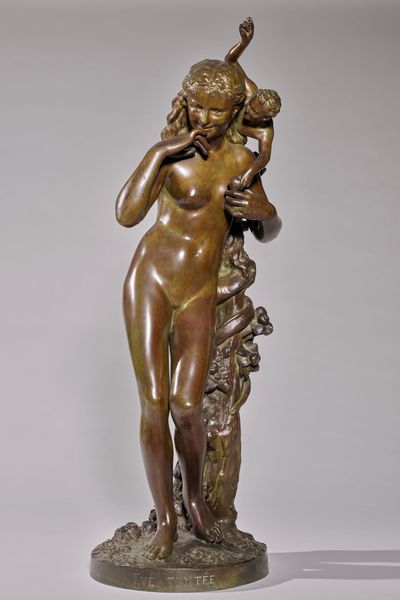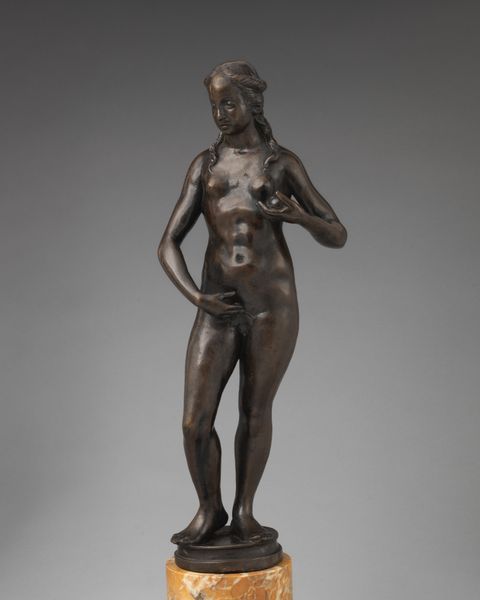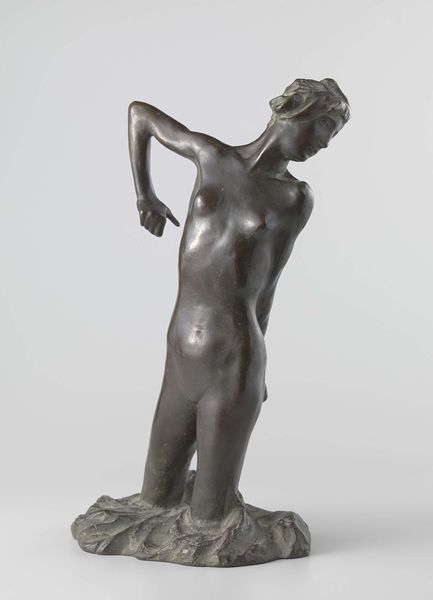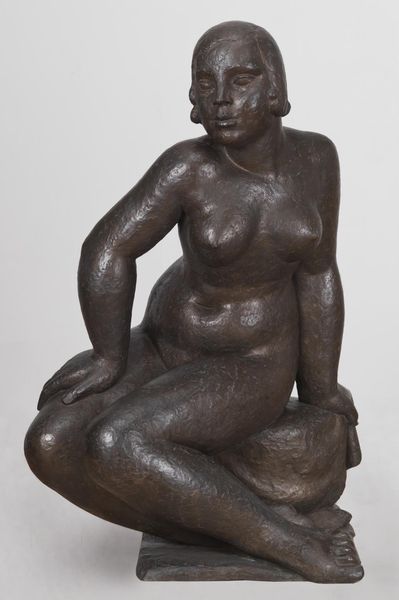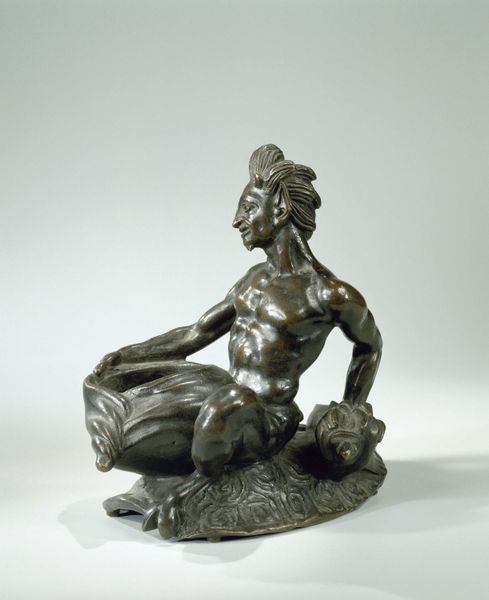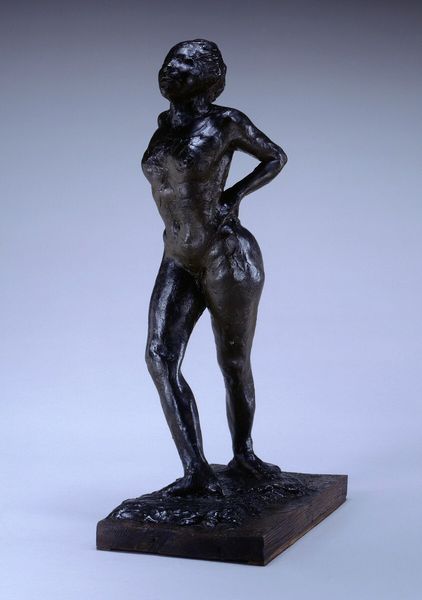
Dimensions: object: 1289 x 940 x 737 mm, 275 kg
Copyright: CC-BY-NC-ND 4.0 DEED, Photo: Tate
Editor: Here we have William Robert Colton's bronze sculpture, "The Girdle," currently residing at the Tate. It's a striking piece, but what strikes me most is how its realism seems to idealize the female form. How do you interpret this work? Curator: Well, let's consider the context. Late 19th and early 20th-century sculptures like this often served specific cultural functions. How might this idealized form have been perceived in relation to the prevailing societal expectations or anxieties surrounding women at the time? Editor: That's a good point. Perhaps it's not just about idealization, but also about power and control, reflecting or maybe even challenging the era's views on femininity? Curator: Precisely. The "girdle" itself, what did it symbolize then? Was it an object of adornment, constraint, or something else entirely? These details provide a crucial insight into how the sculpture engaged with its audience. Editor: I see, it’s not just aesthetics, but also a reflection of the social and political landscape of that time. Thanks for the insight! Curator: My pleasure. Considering these factors really enriches the experience of viewing it.
Comments
Join the conversation
Join millions of artists and users on Artera today and experience the ultimate creative platform.
tate 6 months ago
⋮
Colton trained under William Silver Frith, the pupil and successor of Dalou at Lambeth School of Art. He was heavily indebted to the French style of sculpture, and female nudes, lovers and children dominated his output.'The Girdle' was bought for the nation when it was first shown at the Royal Academy in 1898, and it became Colton's most well known work. The subject of a woman tying a ribbon around her torso is a tenous one, and is instead an opportunity for Colton to celebrate the sensuous grace of the nude. Gallery label, August 2004
